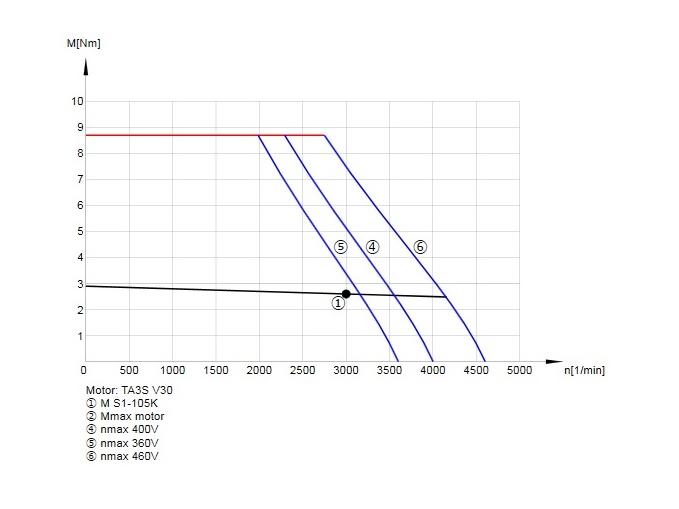
Posted to News on 25th Oct 2021, 08:57
Stepper motor versus servo motor
Which is right for your application?

In today’s industrial marketplace, it can be challenging and confusing when choosing the correct motor for an application. As well as all the different types of motor, the information provided on each is often either too basic or too technical to be helpful. In this article, Mike Keefe of KEB America explains the differences between stepper and servo motors, and when it is appropriate to use each technology.
A stepper motor is a type of brushless DC motor. They are designed to provide a certain number of defined steps per revolution. For example, a motor with 200 steps/revolution will offer a position resolution of 1.8°/pulse (360°/200 pulses). Each time the motor is pulsed by the stepper controller, it will move in the forward or reverse direction according to the number of pulses received. In the stepper example given above, 100 pulses would cause the motor to rotate 180°.
Advantages of stepper motors
A stepper motor is able to offer open-loop positioning, which is a big advantage, compared to open-loop induction motors, which are not able to provide positioning. Most stepper motors do not include any feedback, which lowers the overall cost of a stepper and control solution. Their low cost is a primary reason for their widespread use. One advantage in industrial applications is that a stepper motor can be run with a DC powered stepper drive. They do not require larger inverters that input 230/460VAC or bulky fusing and cabling, which can be quite significant with multi-axis applications.
Limitations of stepper motors
It is possible for a stepper to ‘lose’ position. This can happen, if the stepper motor does not provide sufficient torque to move the shaft and load. It can also happen at high speeds where the stepper motor goes too fast to lock in at each step. This could also happen, if the inertia of the load carries it past the intended step when it is stopped. If the position accuracy of the stepper is critical, some motors will add feedback, such as an incremental encoder.
The feedback will identify, if the actual shaft position deviates from the expected position and the motor can correct itself, as needed. The exception is when the load torque exceeds the rated torque of the stepper. In this case, the motor will stall and not be able to correct itself.
Steppers do not retain any sort of known positioning when they are powered down. Therefore, they need to complete a homing routine every time they are powered up. You can see this when you turn on your printer at home. You will see the motors complete a routine that resets to a known ‘home’ position. In short, stepper motors are ideal for a wide variety of industries and small power applications, ranging from 3D printers, adjustable conveyors and small metering pumps.
What is a servo motor?
While servo motors simply mean a motor controlled with feedback, in the world of automation it is accepted to specifically mean an AC permanent magnet synchronous motor. These motors have a stator similar to that of an induction motor, but their rotors are constructed with rare earth magnets. This eliminates the slip found in induction motors and allows the servo motor to run at the synchronous speed defined by the frequency and number of poles (rpm = 120*Frequency# of Poles).
Advantages of servo motors
AC servo motors use rare earth permanent magnets, so they offer best-in-class torque density. This is preferred for very dynamic motor applications that must accelerate and decelerate quickly. Servo motors include some sort of feedback, whether it is a resolver or encoder. The shaft feedback is critical, because it is used in the servo controller to control rotor position and torque.
Unlike a stepper motor, servo motors are capable of providing momentary peak torque across its speed range. A servo motor’s peak torque can be very important in certain applications and can result in an optimised motor selection. In addition, AC servo motors operate at much higher speeds, compared to stepper motors.
Critical motion control applications that involve functional safety and the handling of critical or expensive products (eg, semiconductor machines) should use servo motors with feedback. The low-cost benefit of a stepper motor/control simply does not justify the risk of injury or product failure. Common examples for their best use are in packaging machines, material handling and robotics.
KEB servo motors can be equipped with absolute encoders, which retain their position information even when the system is powered down. This can be very important in applications where re-homing is not possible.
Limitations of servo motors
The main disadvantage of servo motors, compared to stepper motors, is going to be the cost of the motor and the associated drive that controls it. This is particularly true for smaller power applications (eg, 500W and below). If the application does not require the precision and high torque overload that a servo motor offers, then a stepper motor is likely to be the better choice.
Servo motors are well suited to a range of industries and applications, such as powering conveyor systems for packaging machines, metal cutting and forming machines, as well as robotics.
What does KEB offer?
KEB offers a range of products to support both stepper and servo motors. On the stepper motor side, KEB stepper drive module offers control for stepper motors up to 5A, while utilising CiA 402 motion control profiles. KEB also offers both servo motors and drives to control them. The KEB servo motors offer speeds up to 9,000 rpm and nominal torques as high as 70Nm. To control the motors, the COMBIVERT S6 and COMBIVERT F6 drives combine flexibility and performance to make them ideal for servo applications.
Want the latest machine building news straight to your inbox? Become a MachineBuilding member for free today >>

















